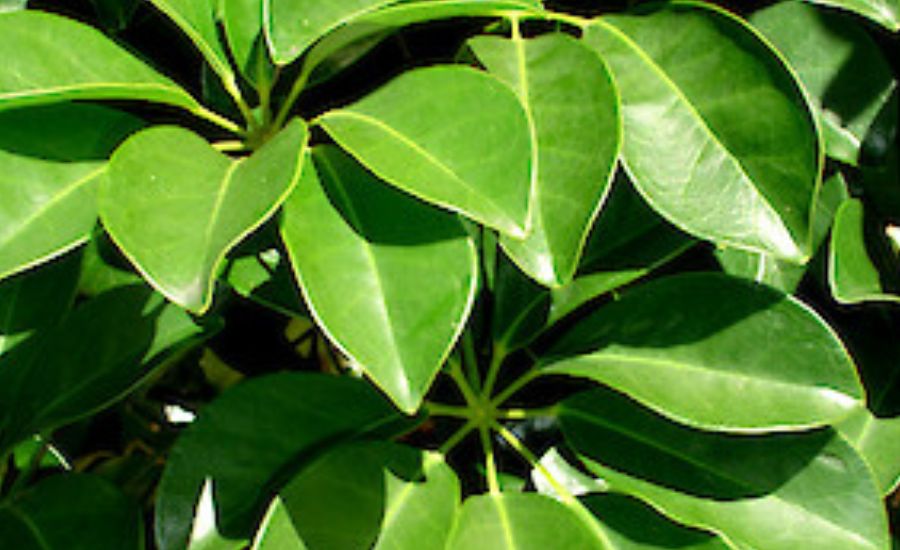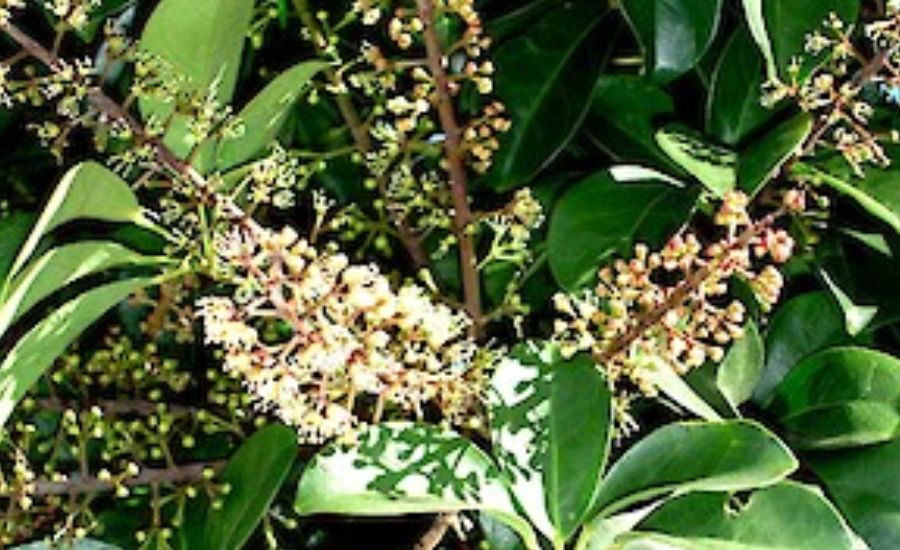When it comes to plant classification, understanding whether a plant is a monocot or dicot is one of the most basic perspectives for both botanists and cultivate devotees. This fundamental classification decides a plant’s generally structure, development designs, and how it interatomic with its environment. If you’ve ever experienced a Schefflera plant, commonly known as the umbrella tree, you might have pondered, “Is a Schefflera a monocot or dicot?” By the conclusion, you’ll have a comprehensive understanding of whether Is a Schefflera a Monocot or Dicot and why this classification matters. In this article we;ll read about Schefflera Monocot Of Dicot.
What Are Monocots and Dicots?
Before plunging into the specifics of Schefflera, it’s pivotal to get it what monocots and dicots are. These terms depict two wide categories of blossoming plants, too known as angiosperms, based on their unmistakable auxiliary highlights, especially those that rise amid seed germination.
Monocots
Monocots are plants that create as it were one cotyledon (seed leaf) upon germination. This is one of the essential highlights that recognize them from dicots. Other eminent characteristics of monocots incorporate parallel-veined takes off, blossom parts that regularly happen in products of three (such as three petals or three sepals), and vascular bundles (the tissues capable for transporting water and supplements) that are scattered all through the stem.
Is a Schefflera a Monocot or Dicot
Famous cases of monocots incorporate grasses, lilies, and palm trees. In monocots, the stem develops in width without auxiliary development, which implies it does not shape the woody tissue seen in a few dicots.
Dicots
On the other hand, dicots create two cotyledons when their seeds grow. These plants by and large display a run of other characteristics that offer assistance to categorize them as dicots. Dicots tend to have net-like, branching veins in their clears out, and their bloom parts ordinarily happen in products of four or five. The vascular bundles in dicots are orchestrated in a ring in the stem, and numerous dicots moreover display auxiliary development, permitting them to thicken and shape wood.
Common illustrations of dicots incorporate roses, sunflowers, and oak trees. These plants are regularly more complex in structure than monocots and incorporate numerous species that develop into expansive trees or shrubs.
Now, let’s address the center address of this article: Is a Schefflera a monocot or dicot? After looking at the plant’s highlights and comparing them to those of monocots and dicots, the reply is clear. A Schefflera is a dicot.
Schefflera has a place to the Araliaceae family, which is portion of the bigger bunch of dicots. It is characterized by the taking after unmistakable dicot features:
Two Cotyledons: When a Schefflera seed germinates, it produces two cotyledons, which is a trademark characteristic of dicots.
Reticulate Leaf Venation: The takes off of a Schefflera plant have a branching vein design that takes after a net, another highlight of dicots.
Ringed Vascular Bundles: The vascular bundles in the stem of a Schefflera plant are organized in a ring, a highlight select to dicots.
Flower Structure: Schefflera blossoms are regularly organized with parts in products of five or more, which adjusts with the blossom characteristics of dicots.
Why Does the Classification of Schefflera Matter?

Understanding whether Is a Schefflera a Monocot or Dicot is not fair a botanical interest. This classification has down to earth suggestions for those developing and caring for the plant. The qualification makes a difference to decide how the plant develops, how to engender it, and the care it requires. Let’s investigate these variables further:
Growth Designs and Structure
As a dicot, Schefflera has a development propensity that is ordinary of numerous dicots. It has a well-developed stem that develops thicker over time, particularly in species that create a woody trunk. This is since dicots have a vascular cambium, which permits them to develop in circumference, not at all like monocots, which regularly develop as it were in height.
Leaf and Bloom Characteristics
Another reason it is imperative to know whether Schefflera is a monocot or dicot is since the shape of its takes off and blooms reflects its classification. As a dicot, Schefflera has takes off with a branching design of veins, not at all like the parallel veins found in monocots. Also, whereas the Schefflera plant is known for its appealing foliage, its flowers—though frequently less conspicuous—follow the normal dicot course of action, with parts in products of five.
Secondary Growth
Because Schefflera is a dicot, it shows auxiliary development in its stems. Over time, this implies the plant can gotten to be thicker and more vigorous, not at all like monocots, which stay generally the same estimate all through their life expectancy. Auxiliary development is common in woody dicots and permits them to back bigger structures, such as branches and takes off, as they mature.
Monocot vs. Dicot: Key Contrasts Explained
Understanding whether Is a Schefflera a Monocot or Dicot makes a difference clarify its key organic characteristics. The contrasts between monocots and dicots are significant and impact how each gather of plants capacities. Here’s a breakdown of the primary distinctions:
Cotyledons (Seed Leaves)
One of the most noteworthy contrasts between monocots and dicots is the number of cotyledons. Schefflera, being a dicot, has two cotyledons that develop amid seed germination, which is a characterizing characteristic.
Leaf Veins
Monocots have clears out with parallel veins, whereas dicots have clears out with a net-like or reticulate design of veins. The takes off of Schefflera have reticulate venation, which adjusts with the commonplace structure of dicots.
Flower Parts
Monocot blossoms more often than not have parts in products of three (such as three petals), whereas dicot blooms tend to have parts in products of four or five. Schefflera blooms ordinarily have parts in products of five, advance affirming that it is a dicot.
Vascular Bundles
Schefflera’s stem has vascular bundles orchestrated in a ring, reliable with the structure of dicots.
Secondary Growth
Monocots by and large do not display auxiliary development (development in width), whereas dicots regularly do. Schefflera is a dicot and shows auxiliary development, which is why it can create into a expansive, tree-like plant over time.
Why Classifying Schefflera as a Dicot is Important
Knowing that Schefflera is a dicot is basic for understanding how to care for and develop this plant. The way the plant develops, its supplement needs, and how it responds to pruning are all impacted by its classification as a dicot. Dicot plants, in common, require particular care, such as legitimate back for their auxiliary development and standard pruning to energize solid development.
Moreover, knowing that Schefflera is a dicot makes a difference recognize it from monocots, which frequently have diverse natural and care necessities. For case, monocots like grasses or lilies may have distinctive soil inclinations or water needs than dicots like Schefflera. By recognizing the plant’s classification, you can guarantee that it flourishes in your cultivate or home.
The Broader Centrality of Plant Classification
The address of whether Is a Schefflera a Monocot or Dicot talks to a broader botanical endeavor: the classification of plants. This classification framework makes a difference researchers, horticulturists, and nursery workers way better get it the plant world. By gathering plants into categories like monocots and dicots, analysts can make expectations approximately how a plant will carry on, its biological part, and its potential uses.
Evolutionary Insights
The qualification between monocots and dicots too gives experiences into plant advancement. Monocots and dicots share a common predecessor, but they separated into isolated ancestries millions of a long time prior. Understanding whether Schefflera is a monocot or dicot makes a difference researchers follow the developmental way of the plant and its relatives.
Ecological Role
Knowing whether Is a Schefflera a Monocot or Dicot too advises our understanding of its biological part. Dicot plants like Schefflera regularly have distinctive connections with pollinators, bugs, and the environment compared to monocots. This information can be utilized to back preservation endeavors and make strides agrarian hones.
Facts
- Monocots and Dicots: These are two main categories of angiosperms (flowering plants), distinguished by the number of cotyledons (seed leaves) they produce during germination.
- Monocots: Have one cotyledon, parallel-veined leaves, and scattered vascular bundles.
- Dicots: Have two cotyledons, reticulate (branching) veined leaves, and vascular bundles arranged in a ring.
- Schefflera Classification: Schefflera, commonly known as the umbrella tree, is classified as a dicot.
- It has two cotyledons upon seed germination.
- The leaves exhibit a net-like venation.
- The vascular bundles in the stem are arranged in a ring, typical of dicots.
- Its flowers generally have parts in multiples of five, also characteristic of dicots.
- Why the Classification Matters:
- Growth Patterns: As a dicot, Schefflera undergoes secondary growth, thickening over time and potentially becoming woody.
- Leaf and Flower Structure: The branching venation of its leaves and flower arrangement reflect its classification as a dicot.
- Plant Care: Understanding its classification helps with proper care, including pruning and fertilization.
Summary
Monocots and dicots represent the two primary categories of flowering plants, distinguished by key features such as the number of cotyledons, leaf vein patterns, and vascular bundle arrangements. Schefflera, a popular ornamental plant known as the umbrella tree, is a dicot. Its classification is confirmed by its two cotyledons, reticulate leaf veins, ringed vascular bundles, and flower structure. This classification is essential for understanding how the plant grows, develops, and should be cared for. The distinction between monocots and dicots also provides valuable insights into plant evolution and ecology, helping scientists, horticulturists, and gardeners better understand plant behavior and care requirements.
FAQs
1. What is the difference between a monocot and a dicot?
- Monocots have one cotyledon, parallel-veined leaves, and scattered vascular bundles. Dicots have two cotyledons, branching veins in their leaves, and vascular bundles arranged in a ring.
2. Is Schefflera a monocot or dicot?
- Schefflera is a dicot. It produces two cotyledons, has reticulate (branching) leaf veins, and its vascular bundles are arranged in a ring.
3. Why does the classification of Schefflera as a dicot matter?
- The classification affects the plant’s growth patterns, structure, and care requirements. Being a dicot means Schefflera undergoes secondary growth and needs specific care for its woody development.
4. How do monocots and dicots affect plant care?
- Monocots and dicots have different growth habits and care needs. Monocots typically grow taller, while dicots like Schefflera may develop a thicker, woody structure. Knowing this helps with appropriate pruning, fertilization, and overall care.
5. What are examples of monocots and dicots?
- Monocots include grasses, lilies, and palms.
- Dicots include roses, sunflowers, and oak trees.
6. How does Schefflera’s dicot classification influence its appearance?
- As a dicot, Schefflera has thick, branching leaf veins, and its flowers often have parts in multiples of five. Over time, it can grow into a larger, tree-like structure due to its ability to undergo secondary growth.
Read More information About that plant At Provibes
